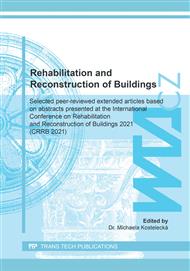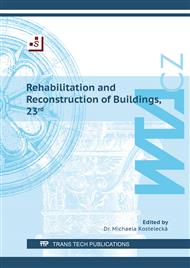p.3
p.9
p.15
p.23
p.31
p.39
p.45
p.55
Chemical Analysis of the Building Material Coating from Historical Bridge in Prague
Abstract:
This paper deals with the chemical analysis of the coating on building materials which were used for construction of Mánes bridge in Prague. It is a historical bridge which is more than a hundred years old. Using the method of infrared spectroscopy, we can determine the organic and inorganic compounds in coatings, adhesives, grout, and polymer materials. The organic compounds are added into the concrete and other building materials due to improvement of physical and mechanical properties such as compressive strength, tensile strength, modulus of elasticity or water absorption. The building materials can be covered with the coating for protection against mechanical damage. The chemical analysis of the building material is important to know before reconstruction and remediation of the historical buildings. As a result, the infrared spectrum of the coating was measured and it was determined that the coating was on the acrylate base.
Info:
Periodical:
Pages:
3-8
Citation:
Online since:
September 2022
Authors:
Price:
Сopyright:
© 2022 Trans Tech Publications Ltd. All Rights Reserved
Share:
Citation:



